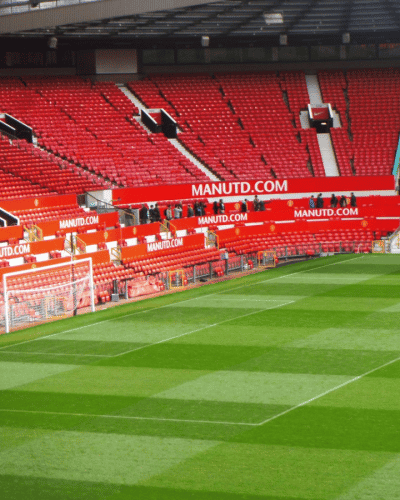The World is Round, Part 3: Football in Australia
Football—known as "soccer" in Australia—has seen tremendous growth in recent years, firmly establishing itself within the nation's sports culture. Traditionally dominated by rugby, cricket, and Australian Rules Football (AFL), Australia has increasingly embraced football, reflecting both the country’s cultural diversity and the sport’s global influence.
A Long Journey to the Mainstream
Football’s history in Australia dates back to the 19th century, brought over by European immigrants. However, for much of the 20th century, it remained overshadowed by more established national sports.
The game gained momentum in the 2000s, especially with the 2004 launch of the A-League, Australia’s top-tier professional football league. This period marked the beginning of football’s rise as a mainstream sport in Australia.
Key moments in this growth include:
✔ The 2006 FIFA World Cup qualification, ending a 32-year drought.
✔ Increased investment in youth development and infrastructure.
✔ The rise of Australian footballers playing in top European leagues.
✔ The country’s hosting of the 2023 FIFA Women’s World Cup, further boosting football’s appeal.
The A-League: Australia's Premier Football League
Founded in 2004, the A-League consists of ten clubs, including teams from Sydney, Melbourne, Brisbane, and Adelaide. Despite a strong start, the league has faced recent challenges such as:
- Declining match attendance.
- Lack of international stars compared to earlier years.
- Strong competition from rugby and AFL.
Nevertheless, clubs like Melbourne Victory, Sydney FC, and Western Sydney Wanderers have built strong fan bases and contributed to developing local talent.
Some high-profile players who have played in the A-League include:
⚽ Alessandro Del Piero (Juventus legend, Sydney FC)
⚽ Nani (Ex-Manchester United, Melbourne Victory)
⚽ Dwight Yorke (Former Manchester United, Sydney FC)
To maintain long-term growth, the league has expanded youth development, invested in club academies, and focused on stadium improvements.
The Socceroos: Australia on the World Stage
The Australian men’s national team, known as the Socceroos, has experienced a remarkable rise in global football.
🌏 FIFA World Cup Qualifications
- Since 2006, the Socceroos have qualified for every World Cup, competing against the world’s best teams.
- The "golden generation" of Harry Kewell, Tim Cahill, and Mark Schwarzer cemented Australia’s reputation as a strong football nation.
🌍 Asian Cup Success
- In 2015, Australia won its first AFC Asian Cup, further proving its strength on the continental stage.
Despite this success, the Socceroos continue to face challenges, including:
- A lack of depth compared to top football nations.
- The need for more players competing in elite European leagues.
- Stronger competition within Asia from teams like Japan and South Korea.
Still, with a young and talented squad, Australia remains a competitive force in international football.
The Rise of Women’s Football in Australia
Women’s football in Australia has experienced exponential growth, fueled by:
✔ The creation of the W-League in 2008.
✔ A dedicated fanbase and growing media coverage.
✔ The 2023 FIFA Women’s World Cup, which saw Australia reach the semi-finals (4th place)—their best-ever finish.
The Matildas, Australia’s women’s national team, have become one of the world’s strongest teams, with stars like Sam Kerr (Chelsea FC), Ellie Carpenter (Lyon), and Caitlin Foord (Arsenal) leading the way.
With growing participation rates and increased investment, the future of women’s football in Australia looks very promising.
Infrastructure & Youth Development
To sustain its football growth, Australia has focused on:
✔ Building modern football stadiums to improve fan experience.
✔ Strengthening club academies to produce top-level talent.
✔ Developing youth programs to encourage grassroots participation.
A key challenge remains Australia’s geographical isolation, which limits:
- Regular high-level international competition.
- Opportunities for young players to gain European experience.
However, partnerships with European clubs and increased participation in Asian competitions have helped bridge the gap.
Challenges & The Road Ahead
Despite football’s progress in Australia, some key challenges remain:
- Competing against AFL, Rugby, and Cricket for viewership and sponsorship.
- Growing the A-League’s fanbase to maintain commercial success.
- Retaining young talent, as many promising players move abroad at a young age.
However, the long-term outlook remains positive, with:
✔ Increased government and private investment.
✔ A passionate and growing fanbase.
✔ Stronger participation from women and youth.
Conclusion: A Sport on the Rise
Football in Australia has transformed from a minor sport to a major competitor in the national sports scene. With stronger leagues, successful national teams, and increasing investment, the game has built a solid foundation for future growth.
As more Australians embrace football, the sport is set to continue its rise—bringing new talent, exciting competitions, and greater success on the international stage.






